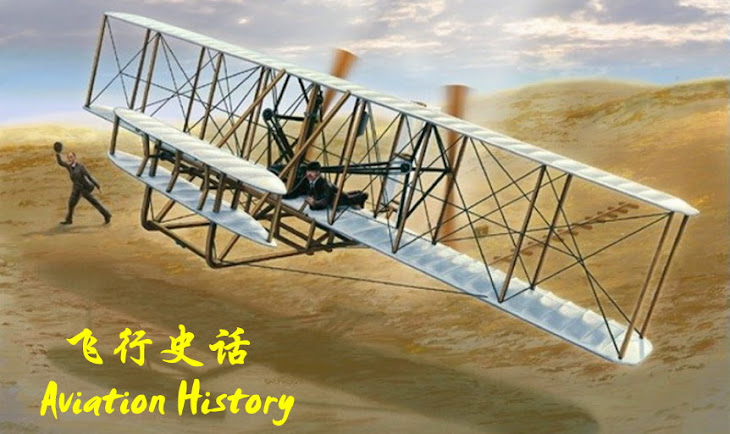March
March 16 - Léon Delagrange flies a Voison biplane for 30 feet at Château de Bagatelle, France.
April
April 6 - Horatio Phillips achieves the first, limited, flight in Great Britain.
August
August 1 - An Aeronautical Division is formed in the U.S. Army Signal Corps to oversee "all matters pertaining to military ballooning, air machines, and all kindred subjects".
September
September 29 - Louis Breguet and Charles Richet demonstrate their Gyroplane No. 1, the first rotary-wing aircraft to lift a person off the ground. (The craft is still controlled by handlers standing around it on the ground).
October
October 12 - Augustus Gaudron crosses the North Sea in a hot air balloon named Mammouth. He flies 1,160 km (721 miles) from The Crystal Palace, London to Lake Vänern, Sweden.
October 19 - Robert Esnault-Pelterie becomes first pilot to fly using a control stick at Buc, France.
November
November 13 - first piloted free flight in a rotary-wing aircraft by Paul Cornu at Lisieux. This first flight lifted Cornu about 30 cm (1 ft) and lasted 20 seconds. Sometimes recognized as first impractical helicopter flight.
First flights
between January and March
The Bleriot V is flown for the 1st time.
July
July 11 - Blériot Type VI Libellule
September
September 10 - Nulli Secundus, the British Army's first airship
November
November 10 - Blériot Type VII, first aircraft of conventional modern configuration
December
December 6 - AEA Cygnet, first manned flight of this tethered glider (also referred to as a kite) designed by Alexander Graham Bell. Flight was also first flight for Thomas Selfridge, who would die a year later as the first person killed in the crash of a powered aircraft.
我的简介

- 刘教练
- 1968年开始参加童军活动。 目前担任吉隆坡坤成童军团总团长兼坤成小学一校童军团教练。 1996年创立全国第一团稚龄童军(Pre-Cubs),并于2002年成立华校第一团航空童军(Air Scout}。 兴趣是摄影、阅读及军事模型制作。
博客归档
-
▼
2009
(264)
-
▼
四月
(111)
- Attempts at Flight 1595-1781
- 2010 in aviation
- 2009 in aviation
- 2008 in aviation
- 2007 in aviation
- 2006 in aviation
- 2005 in aviation
- 2004 in aviation
- 2003 in aviation
- 2002 in aviation
- 2001 in aviation
- 2000 in aviation
- 1999 in aviation
- 1998 in aviation
- 1997 in aviation
- 1996 in aviation
- 1995 in aviation
- 1994 in aviation
- 1993 in aviation
- 1992 in aviation
- 1991 in aviation
- 1990 in aviation
- 1989 in aviation
- 1988 in aviation
- 1987 in aviation
- 1986 in aviation
- 1985 in aviation
- 1984 in aviation
- 1983 in aviation
- 1982 in aviation
- 1981 in aviation
- 1980 in aviation
- 1979 in aviation
- 1978 in aviation
- 1977 in aviation
- 1976 in aviation
- 1975 in aviation
- 1974 in aviation
- 1973 in aviation
- 1972 in aviation
- 1971 in aviation
- 1970 in aviation
- 1969 in aviation
- 1968 in aviation
- 1967 in aviation
- 1966 in aviation
- 1965 in aviation
- 1964 in aviation
- 1963 in aviation
- 1962 in aviation
- 1961 in aviation
- 1960 in aviation
- 1959 in aviation
- 1958 in aviation
- 1957 in aviation
- 1956 in aviation
- 1955 in aviation
- 1954 in aviation
- 1953 in aviation
- 1952 in aviation
- 1951 in aviation
- 1950 in aviation
- 1949 in aviation
- 1948 in aviation
- 1947 in aviation
- 1946 in aviation
- 1945 in aviation
- 1944 in aviation
- 1943 in aviation
- 1942 in aviation
- 1941 in aviation
- 1940 in aviation
- 1939 in aviation
- 1938 in aviation
- 1937 in aviation
- 1936 in aviation
- 1935 in aviation
- 1934 in aviation
- 1933 in aviation
- 1932 in aviation
- 1931 in aviation
- 1930 in aviation
- 1929 in aviation
- 1928 in aviation
- 1927 in aviation
- 1926 in aviation
- 1925 in aviation
- 1924 in aviation
- 1923 in aviation
- 1922 in aviation
- 1921 in aviation
- 1920 in aviation
- 1919 in aviation
- 1918 in aviation
- 1917 in aviation
- 1916 in aviation
- 1915 in aviation
- 1914 in aviation
- 1913 in aviation
- 1912 in aviation
-
▼
四月
(111)
